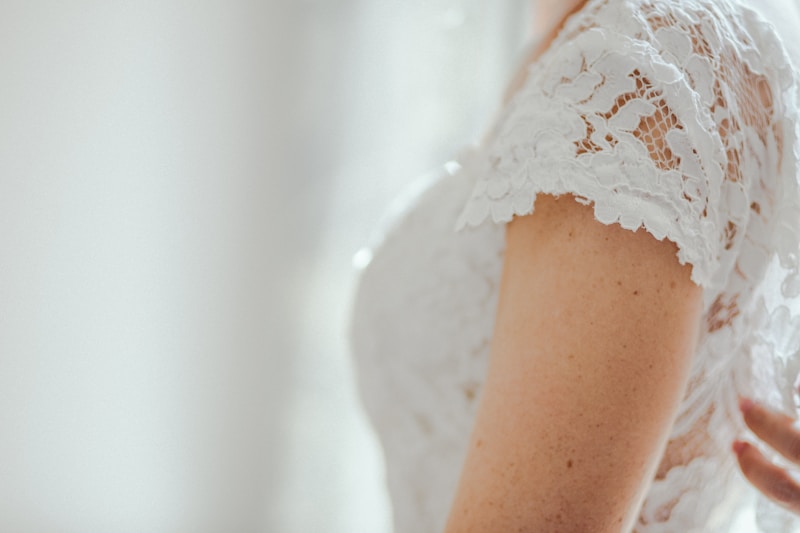Measure Twice, Buy Once: The Ultimate Guide to Wedding Dress Fitting
Measure Twice, Buy Once: The Ultimate Guide to Wedding Dress Fitting
Weddings are one of the most significant events in a person's life, and choosing the perfect wedding dress is a major part of that experience. The phrase "Measure Twice, Buy Once" may well resonate in the realm of wedding dress fittings—our aim is to ensure that every bride attains her dream look without the stress of costly mistakes. Here, we will discuss the importance of measuring properly, what to expect during a fitting, tips for the best dress selection, and common questions brides might have.
The Significance of Accurate Measurements
The first step in comfortably wearing your dream wedding dress is obtaining the right measurements. This process may seem simple, but it is one of the most critical factors that influence how well a dress looks and feels.
Key Measurements for Your Wedding Dress
Here are the key measurements you should provide when seeking to buy your wedding dress:
| Measurement | Description |
| Chest/Bust | Measured around the fullest part of your bust. |
| Waist | Measured around the natural waist, typically just above the belly button. |
| Hips | Measured around the widest part of your hips. |
| Shoulder to Hem | From the top of your shoulder down to where you want the dress to end. |
| Inseam | Measured from the top of your inner thigh to your ankle. |

What to Expect During a Wedding Dress Fitting
Understanding the wedding dress fitting process can alleviate anxiety and uncertainties associated with your big day. During a fitting, you will have the chance to try on various styles and possibly view some samples while talking to the consultant about your vision.
Types of Fittings
There are typically three main fittings involved in purchasing a wedding dress:
- First Fitting: This is when you'll try on the dress for the first time. The bridal consultant will likely ask you questions about how you want the dress to fit and make notes for alterations.
- Second Fitting: This is usually scheduled a few weeks later, where alterations will have been made. You'll try on the dress again to see how it feels after adjustments.
- Final Fitting: This is the fitting that generally occurs just before the wedding day. Ensure you bring your wedding shoes so that the hem can be adjusted accordingly.
Choosing the Right Dress for Your Body Type
The perfect wedding dress not only matches your aesthetic but complements your body type as well. Here are some tips based on common body shapes:
- A-Line: Suitable for most body types, this dress is fitted at the bodice and flows out from the waist, giving a flattering silhouette.
- Mermaid: Flares out at the knee; ideal for those wanting to accentuate curves.
- Ball Gown: A dramatic silhouette perfect for apple-shaped bodies, it features a fitted bodice and a full skirt.
- Sheath: This straight-cut style is ideal for slender brides, providing a sleek look.
Common Questions About Wedding Dress Fittings
Here are some frequently asked questions regarding wedding dress fittings:
1. How far in advance should I schedule my fitting?
It is advised to start the process at least 6 to 9 months before your wedding day. This timeframe allows ample time for fittings and alterations according to your schedule.
2. What should I wear to my fitting?
Wear seamless underwear and bring a strapless bra to ensure that you’re as comfortable as possible during fittings. Additionally, consider wearing shoes that match the height of your wedding footwear.
3. How much do alterations typically cost?
The cost can vary widely depending on the complexity of the changes, ranging from $50 to $500. Make sure to check with your seamstress about estimated costs as you proceed.
4. Can I bring my friends or family to the fitting?
A few close friends or family members can provide valuable feedback, but it’s often best to limit the group to avoid overwhelming opinions.
Final Thoughts and Recommendations
In summary, following the mantra "Measure Twice, Buy Once" during your wedding dress fitting will enable you to avoid costly mistakes and ensure that your experience is enjoyable. The right measurements will ensure the best fit, while understanding the fitting process and the various dress styles tailored to body types will empower you to find your dream dress. To further assist your journey, remember to be patient, take a friend or family member for advice, and explore various styles before making your final decision to ensure that you feel beautiful and confident on your wedding day.
By embracing these tips and utilizing the resources available, you're more than set to stride confidently towards your wedding day in the dress of your dreams.
